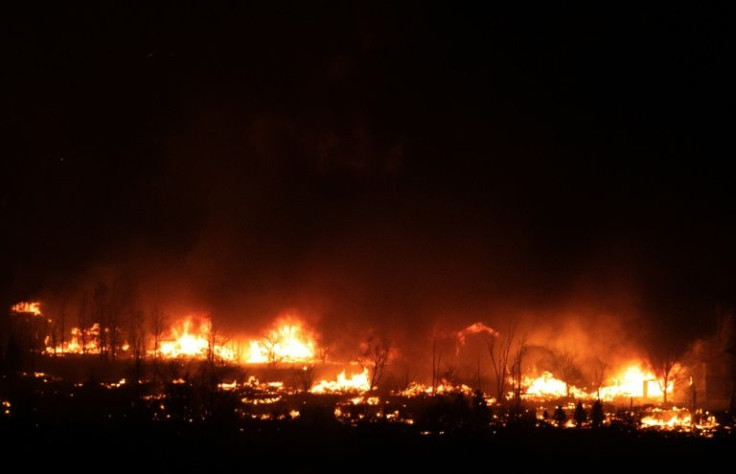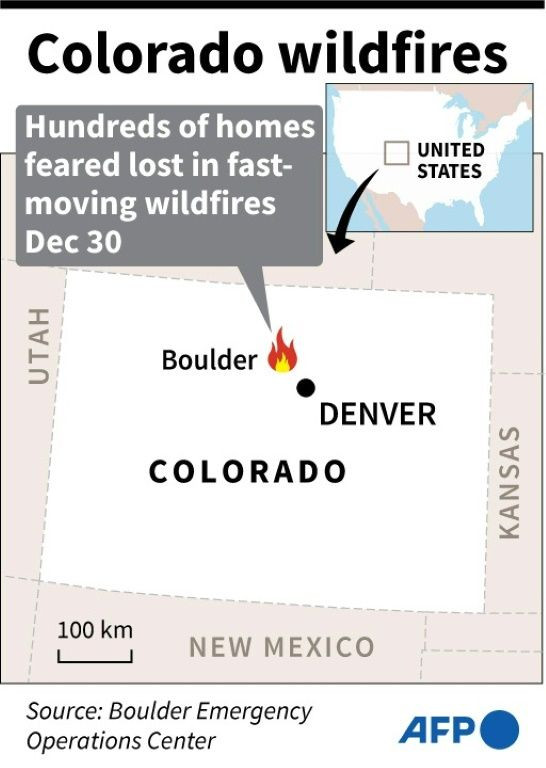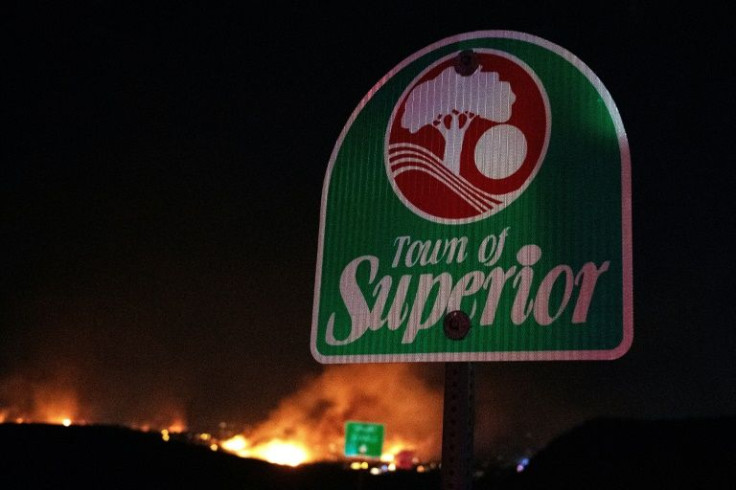Colorado Wildfires Destroy Hundreds Of Homes
Fast-moving wildfires in the US state of Colorado destroyed hundreds of homes and forced at least 33,000 people to flee, officials have said, as flames tore through areas desiccated by a historic drought.
At least 1,600 acres (650 hectares) have burned in Boulder County, much of it suburban, with officials warning that deaths and injuries were likely as the blaze took hold of a hotel, shopping center and apartment complex in the town of Superior.
"We know that approximately 370 homes in the Sagamore subdivision... have been lost. There's a potential of 210 homes lost in Old Town Superior," Boulder County Sheriff Joe Pelle told a news conference on Thursday.
"Due to the magnitude and intensity of this fire, and its presence in such a heavily populated area, we would not be surprised if there are injuries or fatalities."

Colorado media outlets reported that at least six patients were hospitalized with injuries.
About 33,000 people in the towns of Louisville and Superior were told to flee, with the National Weather Service (NWS) describing the situation as "life-threatening."
Patrick Kilbride, 72, was at work in a hardware store when he heard the order to evacuate, The Denver Post reported.
He raced home to gather his possessions, but was unable to save anything other than his car and the clothes he was wearing.

His dog and cat both perished.
"It's ashes," he said of the home he has lived in for three decades.
"It's just a strange feeling to go from having everything to make your life comfortable to having nothing," he said.
The fast-moving fires are thought to have begun when power lines were toppled by gusting winds.
Winds of over 100 miles (160 kilometers) per hour were reported in some places, fanning flames and preventing aircraft from taking off.

Patti Holtz described the terror of evacuating her Boulder County home.
"The ditches and things and the trees, they're all up in flames," she said.
"There's embers everywhere. So it makes me very frightened of course, with the wind, that it's going to continue to spread to other homes.
"It was so dark, of course, that you just can't see anything. It's like the black of night."

Changing weather conditions may provide some relief: NWS cancelled high wind warnings in affected areas late on Thursday and forecast heavy snow across Colorado over the next two days.
Colorado Governor Jared Polis declared a state of emergency Thursday over what he said were devastating fires.
Unlike previous blazes in the state, he said, this one is not in the countryside.
"This area is right in and around suburban sub-developments, stores," he said.
"It's like the neighborhood that you live in. It's like the neighborhood that any of us live in."
Like much of the American West, Colorado is in the grip of a years-long drought that has left the area parched and vulnerable to wildfire.
"One of the many factors that lead to the devastating wildfire today is the recent record dryness," the NWS office in Boulder tweeted.
Although fires are a natural part of the climate cycle, and help to clear dead brush and reduce disease in vegetation, their scale and intensity is increasing.
Scientists say a warming climate, chiefly caused by human activities like the unchecked burning of fossil fuels, is altering weather patterns.
This prolongs droughts in some areas and provokes unseasonably large storms in other places -- phenomena that are expected to get worse as worldwide average temperatures continue to climb.
Daniel Swain, a meteorologist at the University of California, tweeted that it was "hard to believe" these fires were taking hold in December, usually a quieter time for blazes.
"But take a record warm & dry fall, only 1 inch of snow so far this season, & add an extreme (100mph+) downslope windstorm...and extremely fast moving/dangerous fires are the result," he said.
Congressman Joe Neguse, who represents Colorado's 2nd District, called the wildfires "unprecedented."
"(The wildfires) have just created a level of devastation and destruction that our state has not experienced before," he told CNN.
The US Federal Emergency Management Agency approved funding for Colorado's firefighting teams on Thursday.
"The authorization makes FEMA funding available to pay 75 percent of the state's eligible firefighting costs," the agency's statement said.
© Copyright AFP 2024. All rights reserved.





















